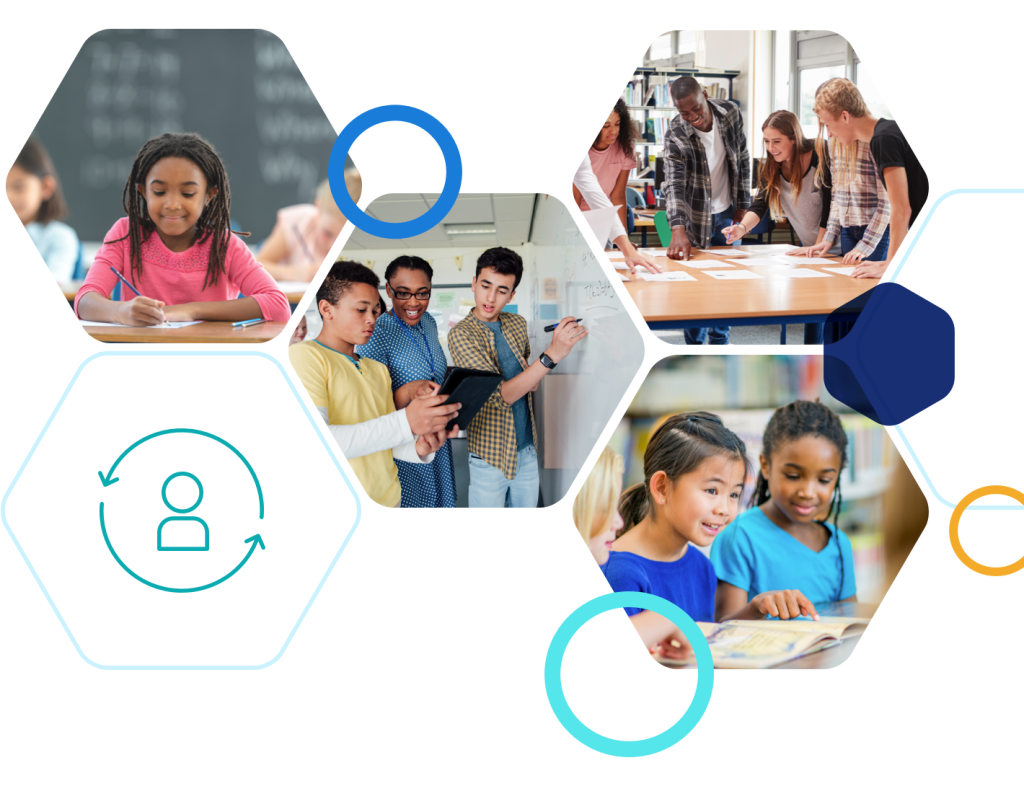Student-centered learning is a transformational approach in education that shifts the focus from traditional teacher-led instruction to an active, student-driven learning experience. This method encourages learners to take ownership of their education, fostering deeper understanding, critical thinking, and long-term engagement.
By embracing personalized instruction, collaboration, and hands-on learning, student-centered education prepares students for real-world challenges and lifelong success. This article explores the principles, benefits, strategies, and challenges of implementing student-centered learning in modern classrooms.
What is Student-Centered Learning?

📜 Student-centered learning is an instructional approach where students play an active role in their education, rather than passively absorbing information.
- Encourages autonomy, collaboration, and problem-solving.
- Promotes personalized learning paths based on student interests and needs.
- Shifts the teacher’s role from lecturer to facilitator.
📍 Instead of “one-size-fits-all” instruction, students engage in meaningful, self-directed learning experiences.
Key Principles of Student-Centered Learning
1. Personalization & Autonomy 🎯
- Students set individual goals and learn at their own pace.
- Learning is tailored to personal strengths, needs, and interests.
- Encourages self-reflection and responsibility for learning.
📖 Example: A reading class allows students to choose books based on their interests, rather than a fixed curriculum.
2. Active Learning & Engagement 🧠
- Students learn through projects, discussions, and hands-on activities.
- Encourages problem-solving, creativity, and real-world application.
📖 Example: In a science class, students design experiments rather than simply memorizing formulas.
3. Collaboration & Peer Learning 🤝
- Encourages group projects, peer feedback, and teamwork.
- Helps students develop communication and leadership skills.
📖 Example: In history class, students debate historical events rather than just listening to lectures.
4. Inquiry-Based & Problem-Solving Approaches 🔎
- Students ask questions, research, and explore topics independently.
- Develops critical thinking and analytical skills.
📖 Example: A geography class asks students to research and propose solutions for climate change in their community.
5. Technology-Enhanced Learning 💻
- Digital tools provide interactive, personalized learning experiences.
- Enables virtual collaboration, adaptive assessments, and real-time feedback.
📖 Example: A math class uses adaptive learning software that adjusts difficulty based on student performance.
Benefits of Student-Centered Learning
- Increases Motivation & Engagement – Students are more invested in their learning when they have choice and control.
- Develops Critical Thinking & Problem-Solving Skills – Encourages deep understanding over rote memorization.
- Encourages Lifelong Learning – Students become independent, curious learners.
- Improves Retention & Understanding – Hands-on experiences reinforce concepts better than passive listening.
- Enhances Collaboration & Communication – Prepares students for teamwork in the workplace.
📍 Student-centered learning fosters real-world skills, preparing students for future success.
Effective Strategies for Implementing Student-Centered Learning
1. Flipped Classroom Model 🔄
✔ Students study new material at home (videos, readings) and apply knowledge in class through activities and discussions.
✔ Maximizes classroom time for hands-on learning.
📖 Example: A teacher assigns a video lecture for homework and then leads interactive problem-solving sessions in class.
2. Project-Based Learning (PBL) 🏗
✔ Students work on extended, real-world projects that require research, collaboration, and presentation.
✔ Encourages deep learning and creativity.
📖 Example: A business class has students develop and pitch their own startup ideas.
3. Inquiry-Based Learning 🌍
✔ Students ask questions, conduct research, and draw conclusions independently.
✔ Fosters scientific thinking and curiosity.
📖 Example: A social studies class asks students to investigate local history and interview community members.
4. Personalized Learning Plans (PLPs) 📜
✔ Students set individual learning goals and track progress with teacher guidance.
✔ Supports differentiated instruction for diverse learners.
📖 Example: In an English class, students choose between writing essays, podcasts, or video projects for their final assessment.
5. Gamification & Interactive Learning 🎮
✔ Uses game elements (points, badges, leaderboards) to increase engagement.
✔ Encourages healthy competition and motivation.
📖 Example: A foreign language class uses Duolingo or Kahoot! for vocabulary practice.
Challenges of Student-Centered Learning & How to Overcome Them
🚧 1. Resistance to Change – Some educators prefer traditional methods.
✅ Solution: Start with small, gradual shifts toward student-driven activities.
🚧 2. Classroom Management Issues – Increased student autonomy can lead to distractions.
✅ Solution: Set clear expectations and structured guidelines.
🚧 3. Time Constraints – Planning personalized learning experiences takes time.
✅ Solution: Use blended learning and technology to manage student progress efficiently.
🚧 4. Unequal Access to Technology – Not all students have reliable digital resources.
✅ Solution: Provide alternative, low-tech student-centered activities.
📍 With proper planning, student-centered learning can be successfully integrated into any classroom.
The Future of Student-Centered Learning
🚀 Artificial Intelligence & Adaptive Learning – AI-driven tools will personalize learning experiences.
🌎 Global Collaboration & Virtual Classrooms – Students will engage in international learning communities.
📡 Expansion of Online & Hybrid Learning – Blended approaches will offer flexibility and accessibility.
📍 Student-centered learning will continue evolving, making education more engaging and effective.
Final Thoughts: Empowering Students to Take Charge of Their Learning
Student-centered learning transforms education by making students active participants in their academic journey. By integrating collaborative strategies, technology, and real-world applications, educators can create meaningful, engaging, and personalized learning experiences.
💡 What student-centered learning strategies have you experienced or used? Share your thoughts below! 🎓✨

